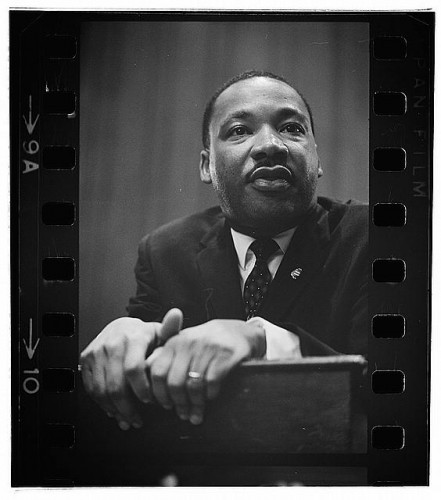In the summer of 1944 a young Martin Luther King Jr. worked at the Simsbury tobacco farm of Cullman Brothers, Inc. Like many other African American students from the South who came to work in Connecticut’s fields, he hoped to earn money for school and his family.
King’s letters home to his mother and father reveal a 15-year-old’s astonishment at the prospects open to African Americans in the comparatively less restrictive North. He wrote of worshiping alongside whites in a Simsbury church and of dining in Hartford. “I never though[t] that a person of my race could eat anywhere,” he wrote, “but we…ate in one of the finest resturant[s]….” The state was not free of racism, of course, but the lack of overt segregation, such as King experienced in the South, made a lasting impression.
Years later, in his autobiography, King observed that his experiences in Connecticut and during the train ride back home to Atlanta helped heighten his awareness of the cruel injustice of segregation:
After that summer in Connecticut, it was a bitter feeling going back to segregation. It was hard to understand why I could ride wherever I pleased on the train from New York to Washington and then had to change to a Jim Crow car at the nation’s capital in order to continue the trip to Atlanta. The first time that I was seated behind a curtain in a dining car, I felt as if the curtain had been dropped on my selfhood. I could never adjust to the separate waiting rooms, separate eating places, separate rest rooms, partly because the separate was always unequal, and partly because the very idea of separation did something to my sense of dignity and self-respect.








